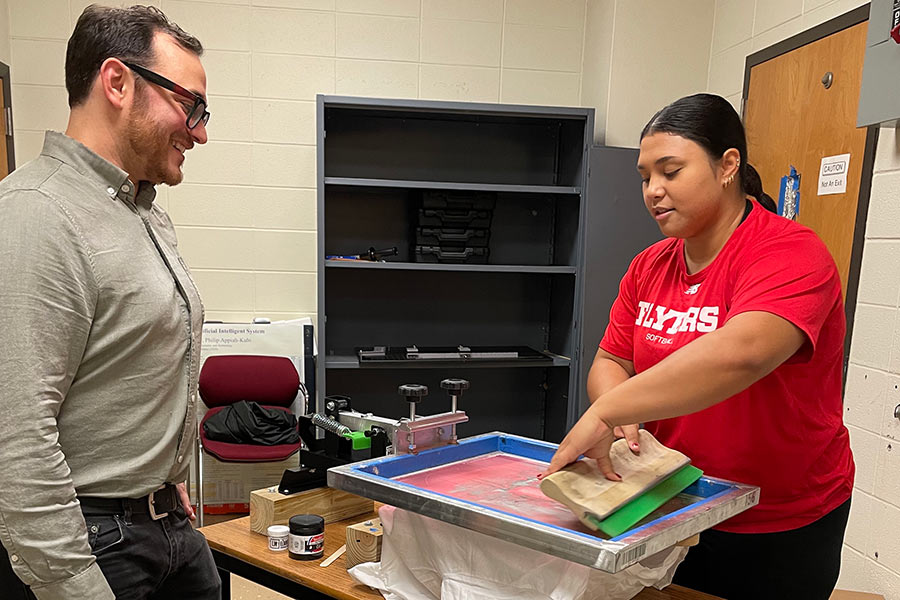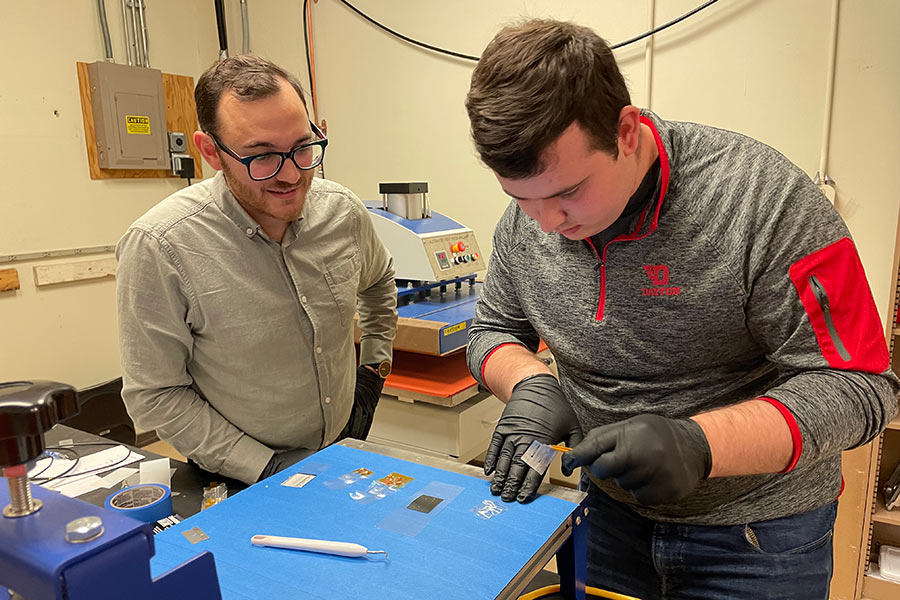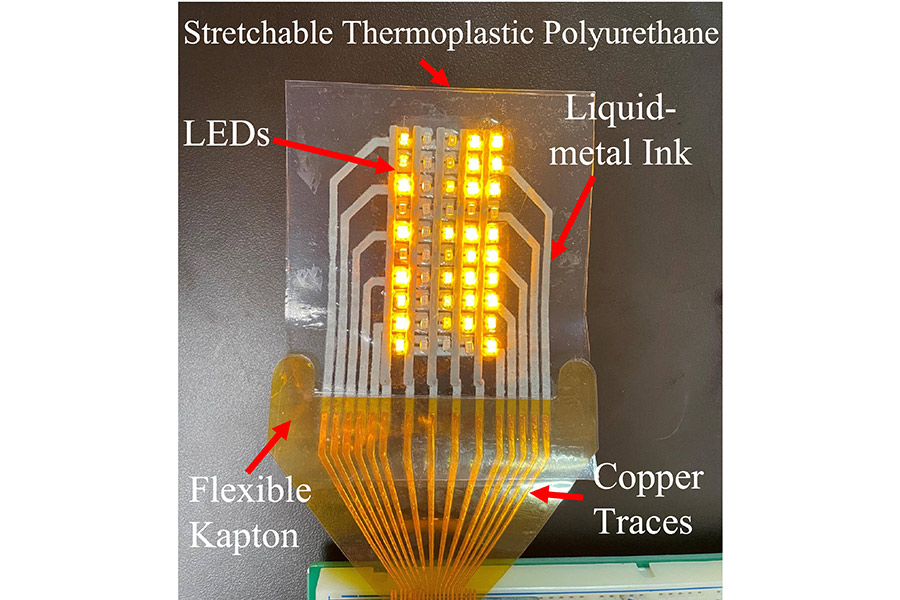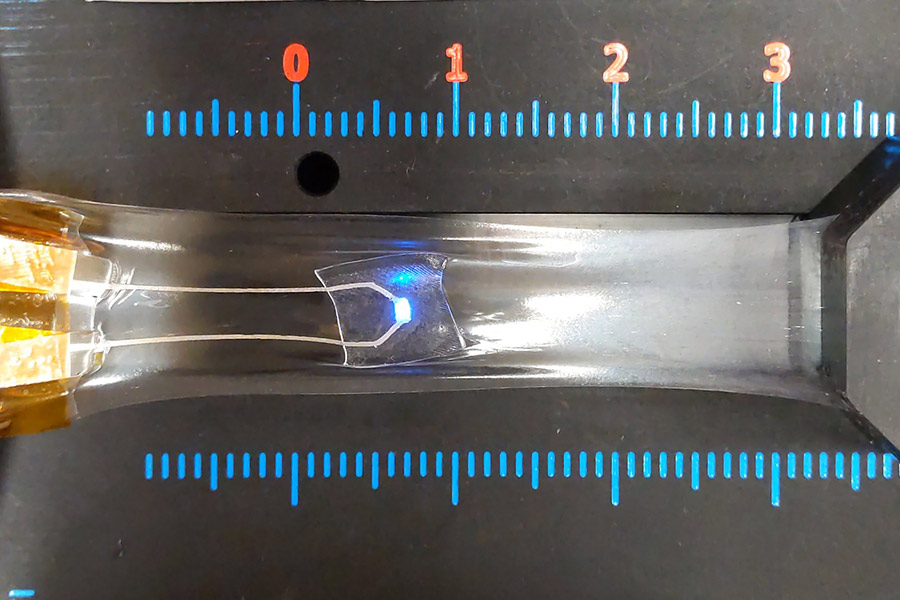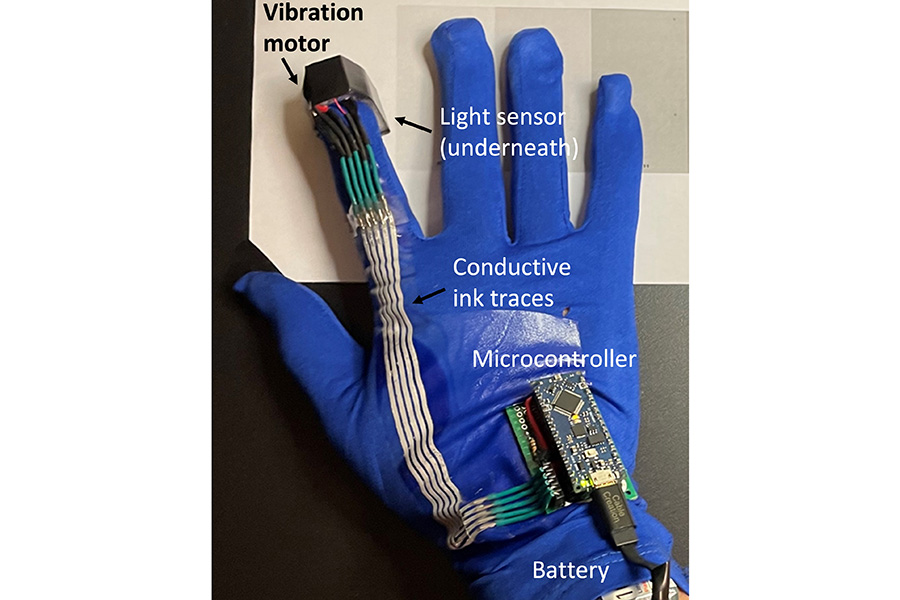Dayton Engineer
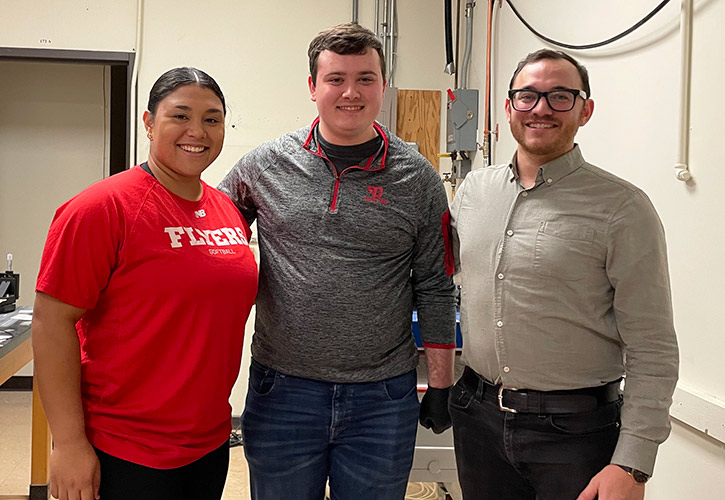
Different engineering paths to UD lead to research for the common good
By Teri Stemley, School of Engineering
Elizabeth Shafer, mechanical engineering junior, and Zach Kranz, electronic and computer engineering technology junior, chose the University of Dayton School of Engineering for different reasons. However, they recently worked together through the School’s Summer Undergraduate Research Experience program and in the Wearable and Tunable Systems Lab with Dr. Alex Watson, assistant professor, Department of Engineering Management, Systems and Technology.
Shafer’s path to UD:
I chose UD because I was looking for a medium-sized school with a small-school feel, an elite softball program that still allowed me to prioritize school, and an engineering program that allowed me to pursue my interests in other subjects. Dayton checked all of my boxes, and when I set foot on campus, I fell in love with the campus and the community.
Kranz’ path to UD:
UD was not on my radar. Dayton was between Columbus, Ohio, where I'm from, and Rose-Hulman, where I was interested in attending. Because we were breaking the trip into two days, we decided to tour UD. I was impressed with the community and the camaraderie at UD, coupled with the excellent engineering program and the variety of majors. I am excited to be in the engineering technology program at UD and wouldn’t be anywhere else.
Watson is elated with the paths that Shafer and Kranz walked that led them to UD. During the School’s SURE program, Watson recruited the student researchers to work with him in his Wearable and Tunable Systems Lab to study a state-of-the-art conductive ink developed at the Air Force Research Lab.
According to Watson:
We are at the cusp of a new soft electronics revolution and see the development of flexible and conformal electronic devices, like batteries, displays, printed circuit boards, and solar cells. Next generation wearables have the potential to impact a vast array of industries, including sensors and communication systems for healthcare, athletics, first responders and military biometric data monitoring, as well as haptic feedback for virtual and augmented reality applications. Any system that requires sensors to be placed on the body (e.g., ECG in healthcare) could benefit.
Glove systems, without external wiring cables, that sense hand position and provide haptic feedback to the user would benefit from the soft, conformal electronics that fit the natural curve of the hand and fingers. Shafer and Kranz are on the forefront of this research. They were so effective through the SURE program that I offered them research positions.
Shafer, a stellar researcher, developed a screen-printing process for this novel conductive ink from the ground up that allowed us to create complex circuit patterns very easily, and more importantly, demonstrates the scalability of using this new ink with a process that can be easily adapted for manufacturing. Shafer is a natural leader.
Kranz, my first student researcher, has shown a tremendous capacity for problem solving on-the-fly, which is ideal in a research position. He started as an academic assistant and helped set up my lab. His resourcefulness and engineering aptitude quickly morphed into a research position. He worked in tandem with a senior design team on the Vision Empower project and helped to develop a prototype glove that uses light sensing and a vibrational motor to allow a user to sense various shades of grey, with the intention to assist blind or visually impaired children to learn STEM concepts that rely on graphs and diagrams. Thanks to the SURE program, he was sponsored to continue his research role into the summer, where he began studying the critical interface between rigid electronic components like silicon chips and soft substrates. He is a motivated self-starter in the lab, and I look forward to seeing what he will come up with next.
Shafer not only continues as a researcher in Watson’s lab but also plays softball for UD, is a peer adviser in the School’s Office of Student Success, is a teaching assistant in thermodynamics, and is the Student Athlete Advisory Committee diversity, equity, and inclusion chair. When asked how she juggles everything, including a rigorous engineering academic curriculum, Shafer proudly acknowledges:
I have great resources that allow me to balance everything I care about. My coaching staff and teammates have played a huge role in my UD experience, and I couldn't do everything I do without their support and advice, and my up-to-date Google calendar helps me to manage my time. I have learned so much about wearable technology, research and development, and have gained a mentor in Dr. Watson. In addition, Dean Schramm, associate vice president of Student Development and dean of students, has been an incredible mentor to me since my first year, and I am grateful to have this relationship.

